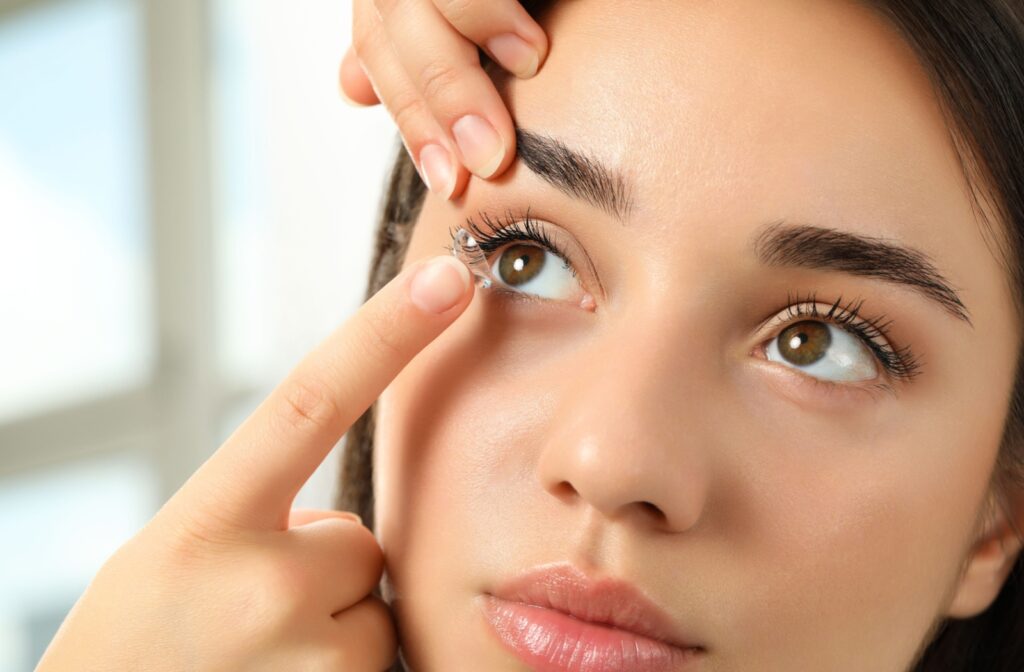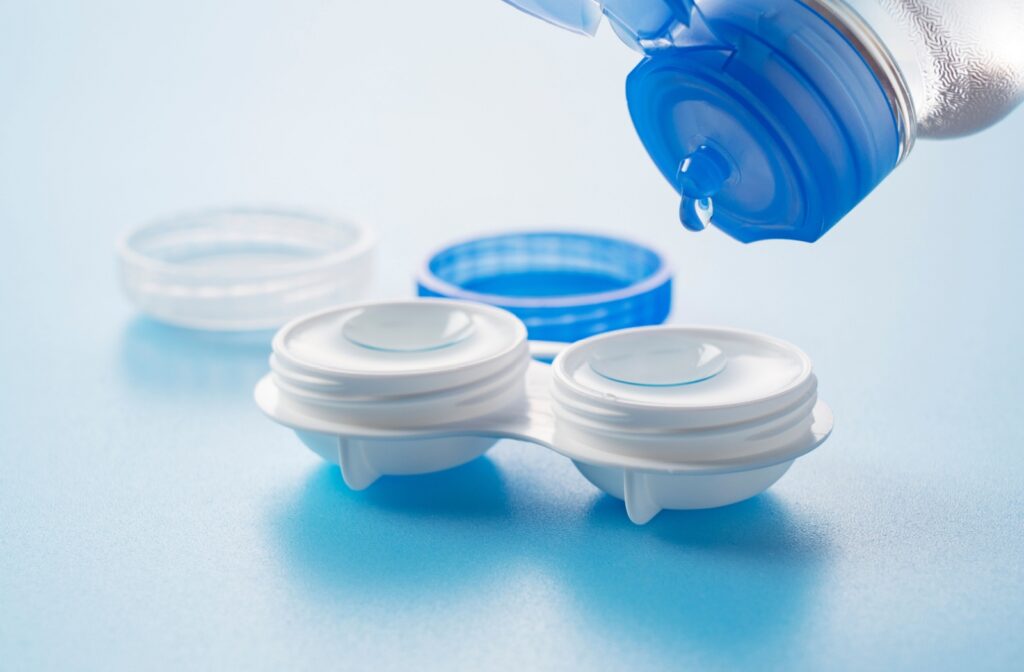For many people, contact lenses are a lifestyle choice for convenience or cosmetic reasons: they offer freedom from frames during sports or social events. For others, however, contact lenses are much more than an alternative to glasses; they’re a medical requirement prescribed to treat specific eye conditions.
Contact lenses become medically necessary when traditional eyeglasses cannot provide clear or comfortable vision.
What Makes Contact Lenses Medically Necessary?
Contact lenses are considered a medical necessity when your vision cannot be corrected adequately with eyeglasses alone. This determination is based on a professional diagnosis from your eye doctor, not on personal preference. While glasses are the standard for vision correction, some conditions prevent them from working effectively.
In these situations, a contact lens acts as a medical device. Insurance plans often have specific criteria to define what qualifies as a medical necessity for coverage.
Conditions That May Require Medically Necessary Contacts
Several eye conditions can make eyeglasses an impractical choice for vision correction. A thorough eye exam can determine if your condition qualifies. Some of these conditions include:
- Keratoconus: The cornea thins and bulges into a cone shape, causing distorted vision that glasses often can’t fix.
- Severe Dry Eye Syndrome: Certain lenses create a moisture-rich space over the cornea to provide relief and protect the eye’s surface.
- Anisometropia: A large difference in prescription strength between your two eyes, which can cause headaches or double vision with glasses.
- Corneal Scars & Irregularities: Scars from an injury or infection can distort the cornea’s surface and block clear vision.
- Aphakia: The absence of the eye’s natural lens, often after cataract surgery, where a contact lens may provide better visual outcomes.

Common Types of Medically Necessary Lenses
Not all contact lenses are the same, especially when they serve a medical purpose. Your eye doctor will recommend a specific type of lens based on your eye health and vision needs. These lenses are designed to address complex eye problems that standard contacts cannot.
Rigid Gas Permeable (RGP) Lenses
RGP lenses are firm, durable lenses that hold their shape on the eye. They provide crisp vision for people with conditions like keratoconus or high astigmatism. They work by creating a smooth, regular surface over an irregular cornea.
Scleral Lenses
Scleral lenses are larger lenses that rest on the white part of your eye (the sclera) and vault completely over the cornea. This design creates a fluid-filled reservoir between the lens and your cornea. This is especially helpful for people with severe dry eye or highly irregular corneas.
Hybrid & Custom Soft Lenses
Hybrid lenses offer a unique design with a rigid center for clear optics and a soft outer skirt for comfort. Custom soft lenses are made-to-order and fit prescriptions or eye shapes that don’t align with standard lenses.
The Process to Get Medically Necessary Contacts
If you think you might need medically necessary contacts, the first step is to see a professional for an evaluation. The process is straightforward and focuses entirely on your specific visual needs. It is a collaborative effort between you and your eye doctor.
- A Comprehensive Eye Exam: Your eye doctor performs a thorough evaluation to assess your eye health, measure your vision, and map your corneal shape. This exam determines if your condition meets the criteria for medically necessary lenses.
- A Custom Lens Fit: If you are a candidate, your doctor takes precise measurements to design a custom-fit lens. This step is important for achieving both comfort and effective vision correction.
- A Trial Period: You’ll wear a trial pair of lenses to make sure they fit correctly and improve your vision as expected. Follow-up appointments allow your eye doctor to make any needed adjustments for a successful fit.
When Contact Lenses May Not Be the Right Choice
While contacts are a great solution for many, they aren’t suitable for everyone. Certain factors may make wearing contact lenses difficult or unsafe. It’s important to discuss your lifestyle and health with your eye care provider.
Situations where contacts might be discouraged include:
- A history of frequent eye infections.
- Severe eye allergies that cause constant irritation.
- Work in a very dusty or dirty environment.
- An inability to handle and care for the lenses properly.
Understanding your options begins with a conversation with an eye doctor in Pleasanton. An eye exam is the best way to learn if medically necessary contacts are right for you or a family member.
At Total Vision Pleasanton, we can diagnose any underlying conditions and explain the available treatments to support your vision. Schedule a visit to learn more about your eye health.



